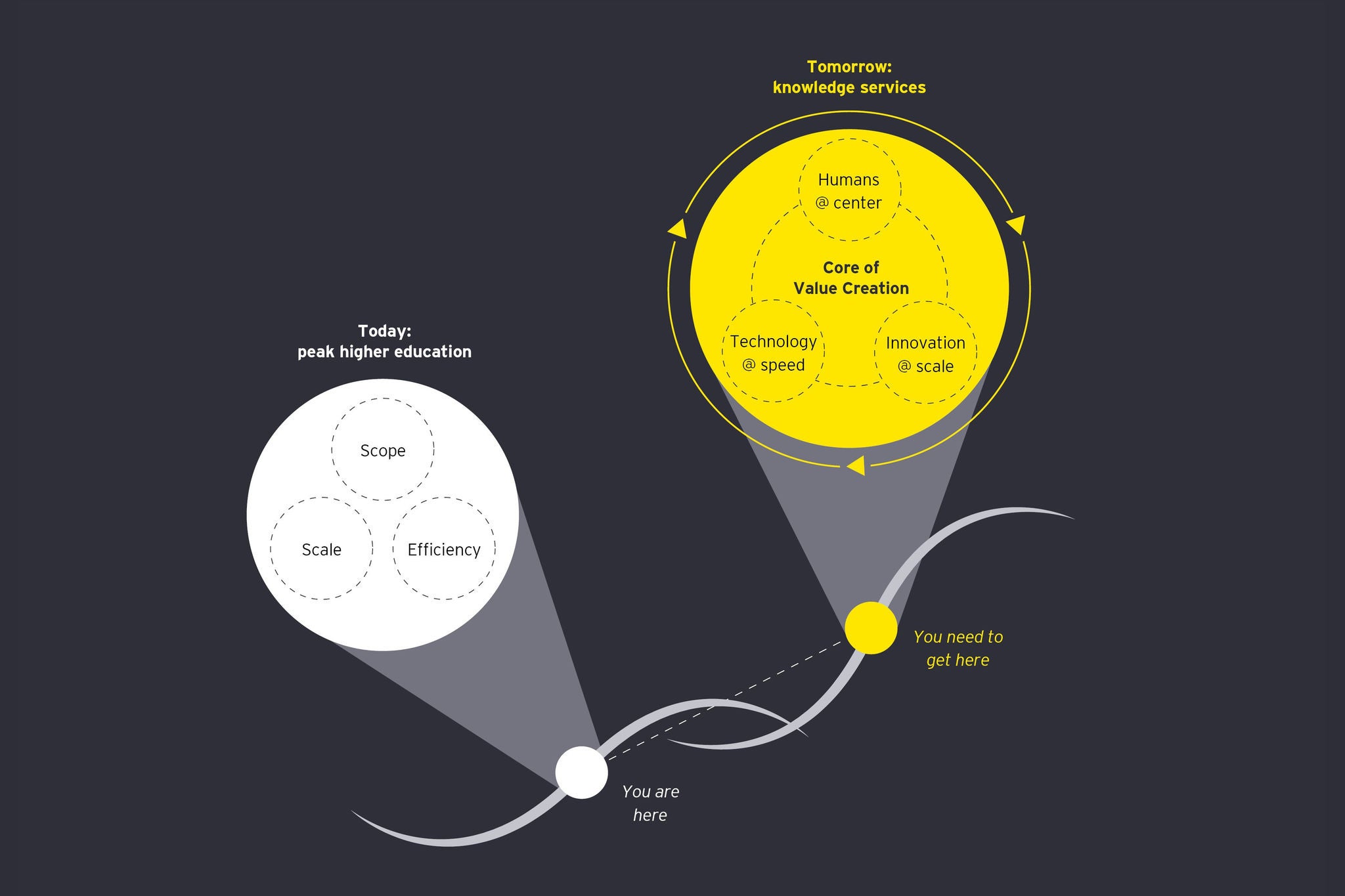EY refers to the global organization, and may refer to one or more, of the member firms of Ernst & Young Global Limited, each of which is a separate legal entity. Ernst & Young Global Limited, a UK company limited by guarantee, does not provide services to clients.
How EY can Help
If they are to innovate at the speed and scale needed to survive, universities must take a “future-back” approach, consider plausible (if confronting) future scenarios and imagine how their operating models may need to radically transform to remain competitive.
Key recommendations:
- Be clear about your long-term purpose
Is your purpose to advance lifelong education well-being, collaborate to solve global challenges, unlock knowledge and commercialize research, or something else?
- Think “future-back” to set your reinvention agenda
Consider possible future scenarios to define the choices you need to make today to remain relevant in one or two decades. Engage your broader ecosystem to think differently about possible futures.
- Build new value with new capabilities
In future, value will come from putting humans at the center, driving innovation at scale and deploying technology at speed. To build these competencies, go outside your sector to find leadership talent from other industries living with reinvention, such as retail, media or financial services.
- Invest across the three time-horizons
Horizon Now (50%): strengthen the core. Horizon Next (40%): build new business models. Horizon Beyond (10%): make big bets to reinvent yourself.
The future is closer than you think. To remain relevant, universities must reinvent themselves. Change must start now — before it is too late.






